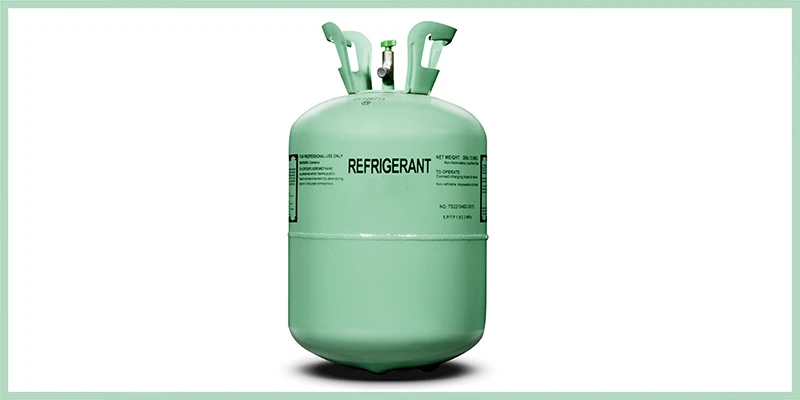What Is Refrigerant and How Does It Help Your Air Conditioner?

Refrigerant is a compound typically found in either a fluid or gaseous state. It readily absorbs heat from the environment and can provide refrigeration or air conditioning when combined with other components such as compressors and evaporators. If you’ve heard about the R22 refrigerant phase out in favor of R410A refrigerant, you might be especially interested to know more about how refrigerant works and what part it plays in cooling your home.
How Refrigerant Works
Without refrigerant, there would be no air conditioning, refrigeration or freezing technology.
Air conditioners contain refrigerant inside copper coils. As refrigerant absorbs heat from indoor air, it transitions from a low-pressure gas to a high-pressure liquid. Air conditioning components send the refrigerant outside where a fan blows hot air over the coils and exhausts it to the exterior.
The refrigerant then cools down and turns back into a low-pressure gas. Another fan located inside the home blows air over the cool coils to distribute the resulting cold air throughout the building. Then the cycle repeats.
Types of Refrigerants
The most common refrigerants used for air conditioning over the years include:
- Chlorofluorocarbons (CFCs), including R12. This is known to contribute to the greenhouse gas effect. Production of new stocks ceased in 1994.
- Hydrochlorofluorocarbons (HCFCs), including R22. Slightly less damaging to the ozone than R12, but the EPA has still mandated a phase out as a result of the Clean Air Act of 2010. R22 will phase out completely by 2020.
- Hydrofluorocarbons (HFCs), including R410A and R134. With no chlorine in the mix, this is safer for the environment and is now being used in place of R22. Air conditioners that run on R410A are more efficient, offer better air quality, increase comfort and improve reliability.
Laws Governing the Use of Refrigerant in Air Conditioners
Even though R410A is an HFC, meaning it’s better for the environment than other types of refrigerant, it isn’t 100 percent safe. This fact has prompted the EPA to establish a few rules regarding the handling and disposal of refrigerant:
- Intentionally venting refrigerant is prohibited. Low-loss fittings must be used to limit the amount of refrigerant released while purging, connecting or disconnecting air conditioners.
- Technicians must do their best to recapture, recycle and dispose of refrigerant safely.
- Air conditioners and other appliances that use refrigerant must be disposed of according to the EPA’s disposal rules.
- Refrigerant leaks must be repaired within 30 days.
- Only licensed heating, ventilation, and air conditioning (HVAC) companies and technicians can purchase refrigerant.
- Violation of these and other refrigerant regulations result in harsh punishments from the EPA, including fees of up to $37,500 per day.
Is it Time to Upgrade?
Go outside and take a look at the exterior component of your air conditioner. If it says R22 on the side, you’re cooling your home with an outdated, environmentally hazardous refrigerant. The EPA doesn’t require you to upgrade your equipment immediately, but if the system springs a refrigerant leak, depleting supplies of R22 could make the repair more expensive than it’s worth.
You can’t simply replace R22 with R410A because system parts aren’t compatible. This means the next time your aging air conditioner requires a repair – especially a refrigerant-related one – it’s probably time to upgrade to a unit that runs on R410A. While this requires an investment, the resulting increased efficiency, better air quality, increased comfort and improved reliability are worth it.
When you’re ready to explore upgrading to an R410A air conditioner, please contact Aire Serv®. We offer free estimates, accurate sizing, flexible financing options and extended warranty plans for the best upgrade experience possible.
 Click to call
Click to call


